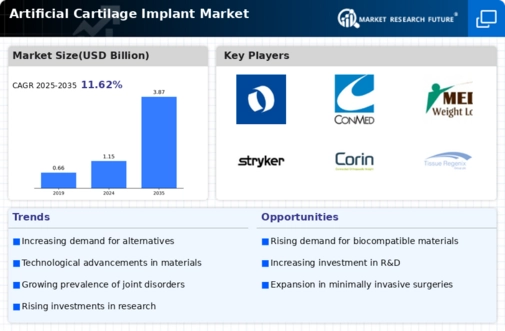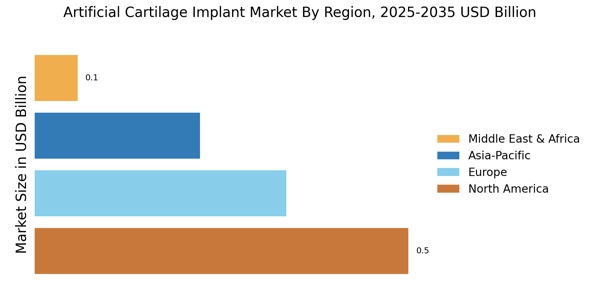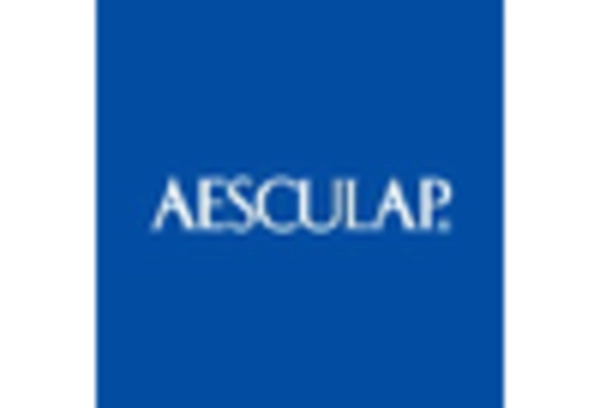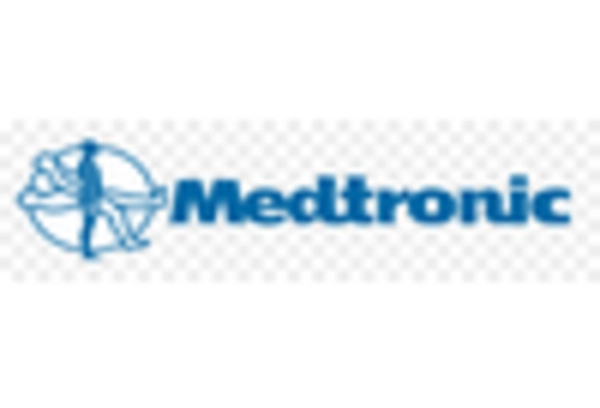Rising Awareness of Regenerative Medicine
The Artificial Cartilage Implant Market is benefiting from a heightened awareness of regenerative medicine and its potential to restore joint function. Patients and healthcare professionals are increasingly recognizing the advantages of using artificial cartilage implants as a means to repair damaged joints without resorting to more invasive surgical options. This shift in perception is likely to drive market growth, as more individuals seek out these innovative solutions. Additionally, educational campaigns and research initiatives are further promoting the benefits of artificial cartilage, potentially leading to a broader acceptance and utilization of these implants in clinical practice.
Technological Advancements in Implant Design
The Artificial Cartilage Implant Market is experiencing a surge in technological advancements that enhance the design and functionality of implants. Innovations in 3D printing and computer-aided design are enabling the creation of patient-specific implants that better mimic natural cartilage. This customization is likely to improve patient outcomes and satisfaction. Furthermore, the integration of smart materials that respond to physiological conditions may revolutionize the way implants function, potentially leading to longer-lasting solutions. As a result, the market is projected to grow at a compound annual growth rate of approximately 8% over the next five years, driven by these advancements.
Government Initiatives and Funding for Research
The Artificial Cartilage Implant Market is supported by various government initiatives aimed at advancing research and development in the field of orthopedic implants. Funding for innovative projects and clinical trials is becoming more accessible, encouraging companies to invest in the development of new and improved artificial cartilage solutions. These initiatives not only foster innovation but also aim to improve patient care and outcomes. As governments recognize the economic burden of joint disorders, they are likely to continue supporting research efforts, which could significantly impact the growth trajectory of the artificial cartilage implant market.
Increasing Demand for Joint Replacement Procedures
The Artificial Cartilage Implant Market is witnessing a notable increase in the demand for joint replacement procedures, particularly among the aging population. As individuals age, the prevalence of osteoarthritis and other degenerative joint diseases rises, necessitating effective treatment options. According to recent data, the number of knee and hip replacement surgeries is expected to reach over 4 million annually by 2026. This growing demand is propelling the market for artificial cartilage implants, as they offer a less invasive alternative to traditional joint replacement methods, thereby appealing to both patients and healthcare providers.
Growing Preference for Minimally Invasive Surgical Techniques
The Artificial Cartilage Implant Market is experiencing a shift towards minimally invasive surgical techniques, which are becoming increasingly preferred by both surgeons and patients. These techniques offer numerous advantages, including reduced recovery times, less postoperative pain, and lower risk of complications. As a result, there is a growing inclination towards artificial cartilage implants that can be inserted using these less invasive methods. This trend is expected to drive market growth, as more healthcare facilities adopt advanced surgical technologies that align with patient preferences for quicker and less traumatic procedures.


















Leave a Comment